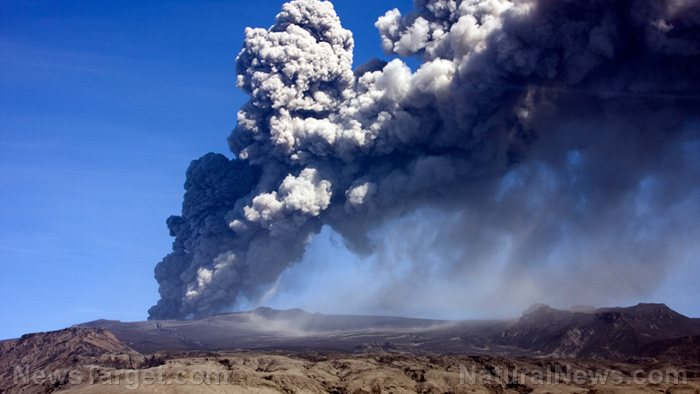An ancient volcano lurks beneath Germany – is it capable of erupting?
03/07/2022 / By Virgilio Marin

A volcano used to loom just outside of Berlin in Germany. When the land on which it stood rifted long ago, it toppled to the ground and got buried by layers of rocks. Millions of years later, is it still capable of erupting?
History of the ancient volcano outside Berlin
In the late 1960s, a group of excavators mined a site in the state of Brandenburg near Berlin. The group spotted the remains of a volcano but immediately abandoned the site after failing to find precious ores.
Largely forgotten thereafter, the volcano attracted renewed interest when molecular biologist Lutz Essers revisited the location. Essers, who moonlights as a scholar of earth science, determined that the volcano used to be perched just outside the city limits of what is now Berlin. According to subsequent studies, it stood at an altitude of over 6,500 feet, and its crater likely spanned around a mile.
But around 290 million years ago, the volcano collapsed due to tectonic plate movements. Pangea, the supercontinent that formerly comprised today’s Africa, Europe, Asia and Americas, shattered into smaller continents and destroyed existing landforms in the process. Over millions of years, eroded material buried what remained of the ancient volcano.
Today, the site at Brandenburg is a different landscape altogether, but remnants can be found half a mile underground.
Is the ancient volcano dangerous?
The ancient volcano likely caused cataclysmic eruptions in its heyday, but it is no longer dangerous today. Buried several feet below the surface, the “volcano” – or what remains of it – is now completely at rest.
The same could be said for other destroyed volcanoes. In Australia, researchers found that a “Jurassic World” of around 100 volcanoes used to lie in the Cooper and Eromanga Basins in the northeastern corner of South Australia and the southwestern nook of Queensland.
Named the “Warnie Volcanic Province,” the volcanoes are thought to have formed during the Jurassic Period around 180 to 160 million years ago, spewing large amounts of lava and hot ash during its lifetime. Today, the volcanoes are nowhere to be seen in the flat, desert-like plains of the basins. As it turns out, they are now buried beneath hundreds of meters of sedimentary rocks.
Last year, researchers proposed that the Aleutian Islands in Alaska were once home to an ancient supervolcano-turned-caldera that got submerged underwater.
If proven to have existed, the 12-mile-wide peak would unite a chain of six existing Aleutian volcanoes in the Islands of Four Mountains into the rim of a caldera – a huge crater that forms due to the inward collapse of landforms after a massive eruption. This meant that those six volcanoes, which include the very active Mount Cleveland, used to be the smaller vents of the supervolcano.
The Aleutian peaks are arranged in a semicircle that becomes a ring when taken together with seafloor ridges. Inside that ring is a 426-foot depression, which serves as the proposed center of the massive caldera.
Supervolcanic eruptions are quite catastrophic; they imply a crater that at one point expelled more than 240 cubic miles of volcanic material. By comparison, the worst known eruption in history – the 1815 eruption of Mount Tambora in Indonesia – ejected 12 cubic miles of ash and lava. (Related: A volcanic eruption in 1815 blocked the sun for a full year, causing global crop failures and famine… and it could happen again.)
Fortunately, the existence of the caldera doesn’t suggest that the active Aleutian volcanoes are likely to cataclysmically blow their top off, according to John Power, a geophysicist at the U.S. Geological Survey‘s Alaska Volcano Observatory, who was part of the team behind the proposal.
“This new research result doesn’t change the hazards,” Power said. “We’re not forecasting something dangerous here.”
For more about volcanic eruptions and other natural disasters, visit Disaster.news.
Sources include:
Submit a correction >>
Tagged Under:
caldera, continents, discoveries, environment, geology, natural disasters, Pangea, real history, real investigation, research, supervolcanoes, volcanic eruption, volcanoes
This article may contain statements that reflect the opinion of the author
RECENT NEWS & ARTICLES
COPYRIGHT © 2017 REAL SCIENCE NEWS





















